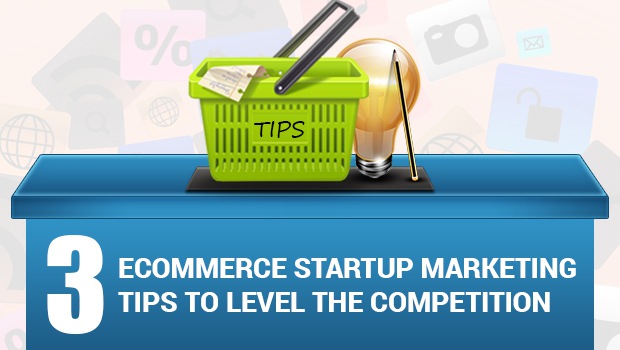Let’s face facts: e-commerce isn’t the Wild West it was just a few short years ago. Amazon has virtually monopolized the sector, and niche opportunities are disappearing fast.
To be a successful e-tailer, you need to take an innovative approach, not just with your interface, products, and tools, but with your marketing strategy. The boilerplate PPC, SEO, and affiliate strategy can still work, but it needs to be augmented with a serious understanding of the future of the web in order to prove successful in the long run.
Keep these three insights in mind as you tackle the sector.
1. Big Data isn’t the Future, it’s Now
Amazon is the most successful e-commerce site on the web. That’s not because of charm, personality, or charisma. It’s because of tools and data. Amazon has been playing the “big data” game for a very long time, and the result has been massive profits. With personalized results and recommended items, people use Amazon just as much for the usefulness of its tools as for the variety of its products.
E-commerce start-ups may not have the sheer number of products that Amazon has, and they may not have the resources to implement recommendation systems powered by dozens of servers and machine learning algorithms, but we’ve already arrived at a point in time where some semblance of “big data” is available to nearly any start-up.
Take Google’s Prediction API, for example. For $10 a month, an E-commerce start-up can make up to 10,000 predictions per month, training a machine learning algorithm on a dataset for $0.002 per megabyte. That amounts to $5 for the maximum-sized dataset: 2.5 gigabytes. True, you’re certainly not going to build user-by-user recommendations with those limitations (at least not in a way that’s scalable), but it’s certainly enough to build some optimized recommendations for a heavily segmented audience.
Meanwhile, tools like KISSmetrics cost a maximum of $500 per month ($150 at the bargain end), and allow you to track behavioral data for individual consumers over extended periods of time, giving you insights about their purchasing habits that can be further crunched.
Personalization has already proven itself to be a powerful way to boost ROI, and studies are already starting to show us that consumers prefer personalization, despite the privacy concerns that naturally come with it.
Meanwhile, free machine learning courses like Coursera’s are already enough to transform novice programmers with little statistical knowledge into people who can win data science contests.
It’s not my intention to start a big debate here about the problem of unstructured data, which is still a huge one, or to argue over the semantics of “big data.” Instead, I’m here to argue that if you want to compete in the marketplace as it stands, your marketing strategy will need to be as personalized as possible with the resources available to you.
2. Online is Moving Offline
When you combine the mobile revolution with things like Amazon’s plans to build same-day delivery systems (with or without drones), the fact that 70 percent of shoppers research online before shopping in the store, and Shopify’s point-of-sale system for their e-commerce platform, you start to get the feeling that “online” isn’t strictly separate from the physical world anymore.
In fact, as Warby Parker discovered, a primarily online business can dramatically improve their customer retention and overall sales simply by adding a small proportion of offline sales, even if they only make up 10 percent of the total figure.
With 30 percent of online shoppers turning straight to Amazon, and only 13 percent to Google, it’s easy to see how, in some cases, it might actually be easier to make an impression offline than online.
E-commerce sites that hope to stand out and make a dent in the public consciousness will do themselves a favor by experimenting offline: in particular by doing some guerilla marketing and opening up a few physical stores when the resources are available.
We went in-depth on the process of moving offline over at CrazyEgg. Here are a few of the takeaways:
- Experiment offline with “minimum viable stores” such as kiosks (or, like Warby Parker, your dining room) before you move into a full-blown store.
- Give your physical location its own website and optimize it for conversions, putting your phone number and driving directions front and center. Split test your landing pages, attributing visits using coupon codes and “reserve for pickup” buttons.
- Use your physical store to “sell” your online store, as well as to capture email addresses (which should be treated like gold).
- Familiarize yourself with retail design and visual merchandising, and give the store a feeling that is coherent with your online store.
E-commerce start-ups certainly don’t need to dive head-first into the offline world, but if they wish to remain competitive, they should be thinking about how it will ultimately work from day one.
3. Understand How Social Networks Drive Sales
There are essentially only two ways that social networks can make you money:
- They refer somebody to your site, where a sale is ultimately made
- They influence brand and product perception, which influence sales
That first point is relatively easy to track and measure. While you can’t split test your posts (unless you make it a promoted post or use some very convoluted targeting options), you can keep a record of your posts and referrals, analyze them, and arrive at insights about how best to refer visitors to your site.
That second one is much more complicated. It’s difficult enough to measure that some marketers question whether such an effect even exists.
An in-depth study out of the University of Singapore demonstrates that this kind of behavior does influence sales, but not in the way most marketers might expect. After combining an Asian retailer’s customer database of 14,000 customers with data from the Facebook API and Facebook Data Science Team, and using text analysis tools on the posts that their customers saw on Facebook, they reached the following conclusions:
- Posts by the marketer did not influence sales, but their comments and other direct interactions with consumers did. (Again, this is ignoring referrals.)
- Interactions with other consumers had a more dramatic impact on sales.
- Information rich comments had a positive influence on sales, whether the comments were positive or negative
- Surprisingly, positive indirect communications with other consumers had the strongest impact on sales
- At the same time, direct interactions with other consumers had the strongest impact on the price elasticity of demand. Direct interactions with other consumers essentially transformed the product into an inelastic commodity.
While there’s no doubt that your own Facebook posts can be optimized for referrals, where further persuasion can occur, it looks like the Facebook post itself isn’t a good place to do any persuading. Instead, if you hope to use Facebook as a platform to drive sales directly, you need to get your audience talking to itself. Your number of Likes or followers is irrelevant.
So, how do you get your audience talking?
That starts with an understanding of what social networks are actually for. They aren’t a place for topically driven discussions the way that a blog comment section or a forum is. They are a place for people to entertain themselves and see what their friends and family are up to.
For an idea of what works on social networks, you can look at Facebook Pages like Interesting Things, JustGirlyThingsღ, and Deal Dash, all Pages that are doing the unthinkable: getting even more people “talking about this” than Liking their Page.
When you look at Pages like this, you’ll notice commonalities:
- Every post is an image or a video
- Ugly memes and stylized text can do just as well as beautiful images
- The content is almost always relatable, surprising, “mind blowing,” funny, actionable, inspiring, cute, or “feel good.”
- It’s almost always curated (and unfortunately, often with zero attribution).
While I’m not remotely suggesting that you should copy everything these Pages are doing, I am suggesting that if you fail to understand why these Pages are working, you will fail to make the most of social networks.
The crucial thing to understand is that social networks are not blogs or forums. They are not “niche” communities. They are a mass market platform, and they are used almost exclusively for entertainment. While relevance is certainly important if you hope to drive traffic that converts, it’s actually more important to stick to bite-size content that people will talk about.
Your hardcore audience doesn’t live on social media. It lives on forums, blogs, and email.
E-commerce is an increasingly difficult arena for start-ups. Without creative experimentation with offline, big data, and social media, the vast majority of start-ups will fall behind. Don’t let that happen to you.





